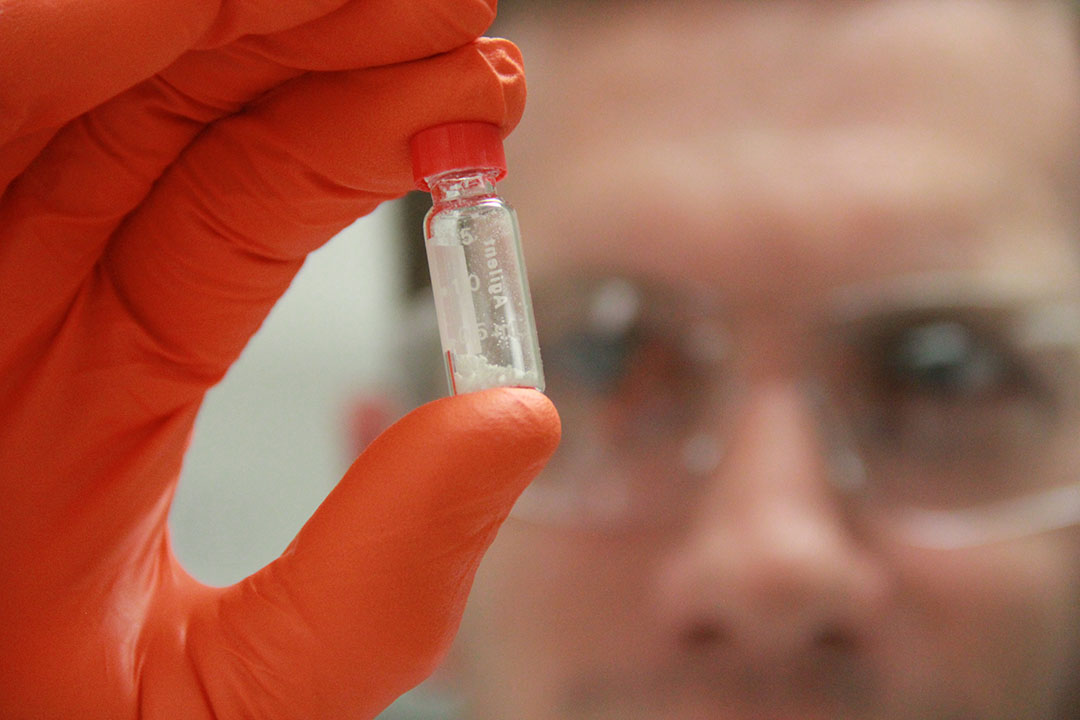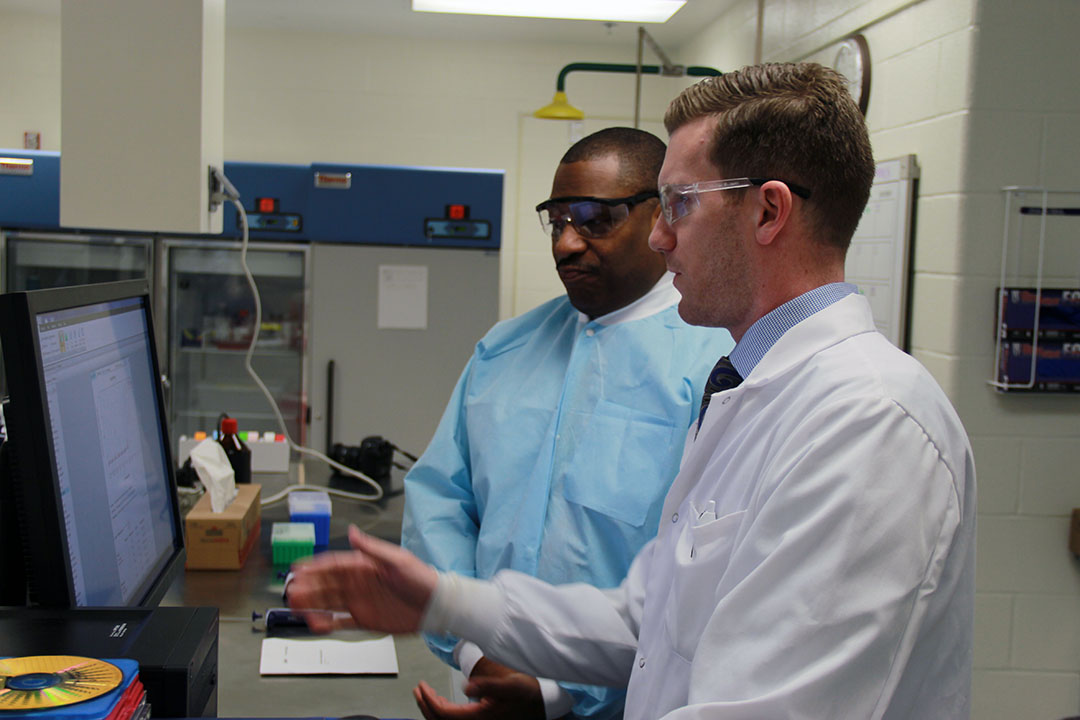// NEWS RELEASE
ECBC Seeks Answers to Synthetic Opioid Questions
Research could ultimately save military, civilian lives
CCDC Chemical Biological Center Public Affairs | August 3rd, 2017
ECBC Seeks Answers to Synthetic Opioid Questions
Research could ultimately save military, civilian lives
DEVCOM CBC Public AffairsAugust 3rd, 2017

Mike Feasel, Ph.D., performs carfentanil research to learn more about the opioid and bring the technique of generating metabolite libraries to ECBC.
A U.S. Army Edgewood Chemical Biological Center (ECBC) researcher is studying the synthetic opioid carfentanil with the ultimate goal of saving military and civilian lives.
Michael Feasel, Ph.D., ECBC Toxicology and Obscurants Branch, has been studying the metabolism of carfentanil as well as the isolation and structure of the metabolites formed after introduction to the body. A 0.001 milligram dose of carfentanil is enough to incapacitate someone. Health officials in multiple states have declared carfentanil abuse a public health emergency, and the U.S. Drug Enforcement Administration says communities everywhere should be on alert for the drug, which is used to tranquilize elephants.
The drug has also raised concerns due to its potential application as a chemical warfare agent. Feasel’s study stemmed from a 2012 Defense Science and Technology Laboratory, United Kingdom, publication which referenced carfentanil and remifentanil being utilized to quell the Moscow theatre hostage crisis in 2002.
Carfentanil inhibits neurons by activating the opioid receptors in the body and shutting down the respiratory and central nervous systems. Naloxone, an anti-overdose drug, works by reversing the effects caused by a narcotic. A 2 milligram dose of naloxone can revive an overdose victim, but it has been reported that multiple doses of naloxone may be required for a carfentanil overdose. If one could be certain of the amount of naloxone needed to resuscitate a carfentanil victim, lives could be saved in both the narcotic usage and the defense communities, according to Feasel, who has proposed studies at ECBC to research the effects of removing the drug from cell receptors using substances such as naloxone.
“Higher potency versions of naloxone are available, however the Food and Drug Administration has not seen a need to get them approved for human use, until now,” Feasel said. “These ultra-potent opioid exposures are not only a chemical defense issue, but they are also a public health issue.”

Feasel, who recently received a Ph.D. in toxicology at the University of Maryland, Baltimore School of Medicine, approached principal investigator Marilyn A. Huestis, Ph.D., then-chief of chemistry and drug metabolism at the National Institute on Drug Abuse’s (NIDA) Intramural Research Program about a collaboration on identifying carfentanil metabolites. Huestis recognized the epidemic and need to research carfentanil, and agreed to collaborate with Feasel and Robert Kristovich, Ph.D., ECBC Molecular Toxicology Branch chief.
Feasel worked in NIDA’s labs for weeks incubating hepatocytes, commonly referred to as human liver cells, in a two-dimensional platform. Twelve metabolites were identified in total and the hepatocyte incubations showed slower clearance, providing some insight into the duration of carfentanil’s effects on the human body. Recent biological studies have shown cells forming on their own adhere to each other forming spheroids. Feasel conducted a follow-on study incubating carfentanil with three-dimensional liver spheroids. In this instance the spheroids closely resembled a human liver organ versus the two-dimensional platform which was similar to an individual cell. “By using a 3D subculture we are enabling the access to realistic data or in vivo metabolism,” observed Feasel.
Conclusions on this study have not yet been made as Feasel and his team are in the process of analyzing the data.
“My goal with this study was to not only to understand this opioid, but to also bring the process and techniques of generating metabolite libraries to ECBC” remarked Feasel. “ECBC could apply the technique to unknown compounds which may be of interest to the CB defense community.”
The U.S. Army Combat Capabilities Development Command (DEVCOM) leads in the discovery, development and delivery of technology-based capabilities to enable Soldiers to win our nation’s wars and come home safely. DEVCOM is a major subordinate command of the U.S. Army Futures Command. The DEVCOM Chemical Biological Center is the Army’s principal research and development center for chemical and biological defense technology, engineering and field operations. The DEVCOM Chemical Biological Center is headquartered at Aberdeen Proving Ground, Maryland.
